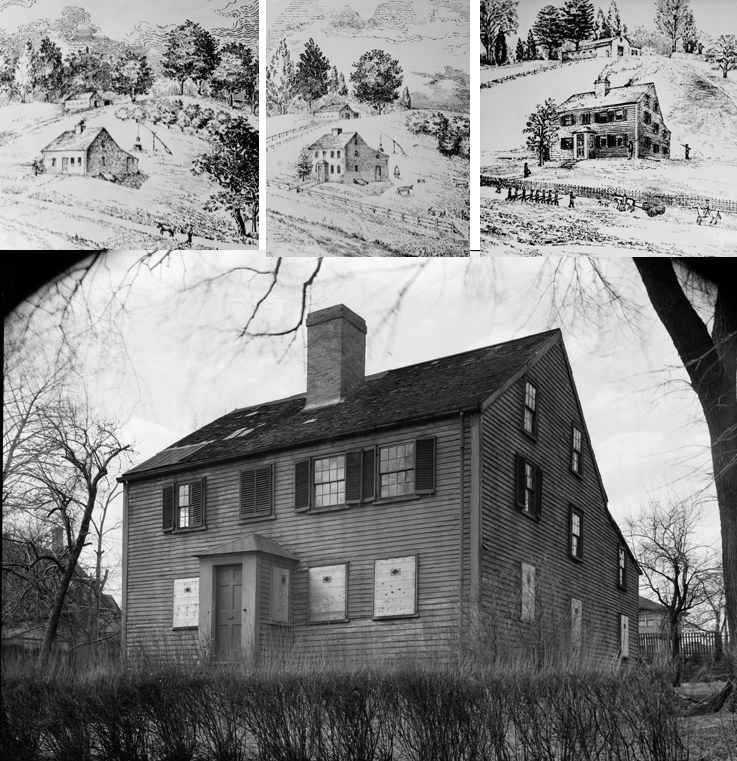
Bird-Sawyer House, Humphreys Street
Dorchester Illustration 2641
Thomas Bird arrived in Dorchester from England on the second voyage of the ship Mary and John in 1635. He was a poor man but he did well enough to buy a large tract of land west of Dorchester Brook, between what is now Dudley and East Cottage Streets.
Mary Bird Hill, grandmother of Charles Winthrop Sawyer, the owner in the late 1920s, told Sawyer that she had seen Thomas Bird’s deed to the land dated 1637 with an Indian’s thumbprint on it. Bird probably built his house soon thereafter. When he died, his estate was valued at 1,000 pounds and included “ye olde dwelling house” and “ye new dwelling House.” It’s not certain which of these was the house still standing in the early 20th century.
The following comments are from the Historic American Building Survey.
“Additions were necessary to accommodate grandchildren, so the house grew with the family. The original house consisted of two rooms, a bedroom and kitchen and an attic (illustration at top left). To this was later added a “lean-to” which was later incorporated into the house. The point of demarcation remained clear as one had to step down a few inches into the lean-to portion from the first floor of the original house. Later the roof was lifted to provide two rooms upstairs with a new attic above (illustration top center). Still later the attic roof was lifted to a higher peak and two more rooms were placed above those in the rear. Four rooms, two above and two below were built in 1804, replacing the second lean-to (illustration at top right). The low ceiling, the wrought-iron latches and locks, and the uneven flooring created an atmosphere of early pioneering Puritanism. In the kitchen, the great brick fireplace was the center of attention.”
Charles Winthrop Sawyer was an engineer and an avid firearms collector. He published Firearms in American History, 1600 to 1800 (1920). Later in life, he was unable to maintain the house. After it was vandalized, the house was taken down in the 1950s.
